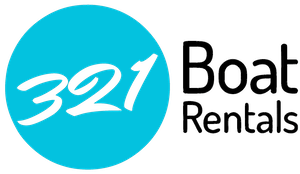One of the most important aspects of boating is docking a boat. For beginners, this can be a difficult process which will get better with experience. As a novice, it’s likely that you’ll make mistakes to begin with but here are 11 tips to help you become a master.
Don’t Approach a Pier Faster Than You’re Willing to Hit It
The cardinal rule of docking a boat is that you don’t ever want to approach the pier any faster than at the speed in which you are willing to strike it. At any point you could make a small mistake which could cause the boat to act in a way that’s opposite of what you intended it to do. Make sure to always approach any solid, stationary objects slow enough so that if something goes wrong and it looks as though you’re going to run into it, the results won’t be devastating.
Make Sure to Use Enough Power to Dock the Boat
When docking a boat, applying too much power is the biggest mistake you can make as it will cause the boat to slam into the pier. The second biggest mistake would be to use insufficient power when docking the boat. When sliding into the slip, it’s important that you counter and overcome the momentum, wind, and current that can cause the boat to go somewhere other than intended.
Always Visually Inspect the Slip Before Docking
It’s important that you examine the slip before pulling the boat in to dock no matter how many times you’ve docked there. The biggest issue you can avoid by inspecting the slip has to do with mooring lines. If there are any lines that have fallen off the piling and into the water, be it yours or a neighbors, they could stretch across the path of your boat causing it to get tangled in the mooring line.
Don’t Ever Touch the Wheel with Twin Inboards
It may be tempting to correct the wheel when docking with twin inboards but you shouldn’t. By leaving the wheel centered and just using the power of the engines, you have more control over the boat. If you do attempt to turn the wheel, then when you try to use the engines and the prop-wash hits the cockeyed rubber, your boat may not go in the direction intended.
Reduce Windage in Heavy Winds
You should reduce the windage when navigating your docking through heavy winds. This is especially important for small boats. Reducing the windage will make the docking process much easier while failing to do so could make the process much more difficult. For a powerboat, a Bimini top or an Isinglass enclosure can act as a sail and throw the boat off kilter. For a sailboat, a sail that has been left unfurled can have a similar effect.
Don’t Kill the Engine Until All Lines Are Secure
Often those that are new to docking like to shut off the engine as soon as the boat enters the slip. However, a crew member could have dropped their line or a piling could end up out of reach which could cause trouble in docking. It’s important to keep the power on until you dock so that you can expect the unexpected and maneuver as needed.
Abort If Necessary
To avoid any damage to the boat, it’s important that you dock it correctly. With that in mind, don’t be afraid to abort the docking process and start again. This is especially important for sailboats, single-crew inboards, and other boats with limited maneuver ability. If during the docking process you feel that it’s not going well, circle around and try again.
Learn Docking by Using Fenders Placed with Precision
When docking, you need to be able to judge where the boat will glance off the piling and how to orient the fenders so that they’re not caught under the pier or swing above it. Properly positioned fenders will help tremendously in docking without causing any damage.
Always Turn the Wheel Before Applying Power When Docking a Single-Engine Boat
When docking a single-engine boat, always turn the wheel before you apply power. This will ensure that you don’t get a blast forward or in reverse before the blast of the port or starboard kicks in.
Always Apply Short Bursts of Power Instead of Steady Power
Entering the slip with a lot of momentum can cause the boat to get out of control. By applying short bursts of power instead of continuous steady power when docking, you can maneuver without building up too much momentum and losing control.
Practice Docking
The best way to become an expert at docking is practice. Attempt the process as much as possible and you will undoubtedly improve over time.
One of the most important aspects of boating and one of the most difficult is successfully docking the boat. These tips will help novice boaters become better at docking. If you’re not ready to own a boat but want to enjoy sunny days on the water, join 321 Boat Club.
